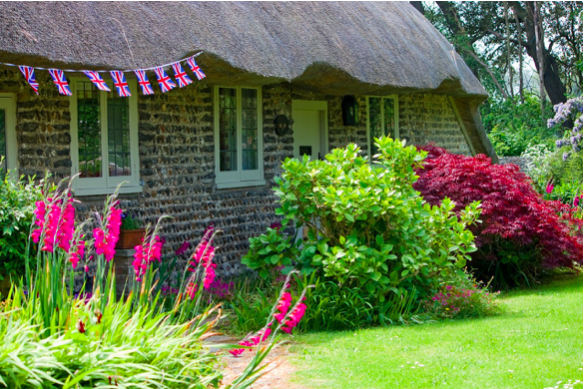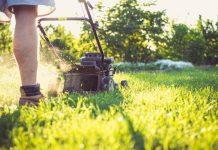Plants expend a lot of energy blooming and producing fruits
(and seeds). More often, we do not allow the full cycle of plant life to
complete. We disrupt it when we harvest the leaves or fruits. So they really
don’t get to mature. This can be frustrating to vegetable plants in our home
gardens. We, therefore, have to support them to grow healthily.
Keeping your home garden green and healthy all year round
means hard work. But you have to do it. This is because garden vegetables and
ornamental plants are less forgiving of neglect. Neglected plants will have to
contend with pests and diseases. This will lead to lower yields and inferior
vegetables.
You can learn a few tips on how to maintain your home
garden. If you do it well, your plants will bloom and produce their fruits all
year round. Here are the most helpful tips:
1. Water Your Garden Appropriately
The main ingredients for healthy plant growth are water and
sunlight. Regular watering of garden plants is vital if your area is hot. By
regular watering we mean 1 or 2 inches per week. Without water, your vegetables
will fail to fill out.
Some vegetables will crack open if you surprise them with
water after a period of dryness. Overreliance on the rain is a big mistake with
home gardens. Instead, look into sprinklers, soaker hoses, or a drip irrigation system.
Modern drip irrigation systems are affordable contrary to
what many people believe. Furthermore, you will save a lot of water since it
gets straight into the plant roots. You will lose very little water to
evaporation
2. Stay On Top Of Weeds
Vegetables do not have what it takes to compete with weeds
for water and food. When planting your garden after preparing the ground, you
will have a head start. Sooner or later, the weeds that you didn’t completely
remove start to spring up.
Remove any remnants of weeds in the pathway between the
plant rows. Do it by digging or hoeing. A good layer of mulch will also
suppress the different kinds of weeds. Weed on a regular basis during the entire life of the
garden. Weed can be efficient in draining water and nutrients from the soil.
3. Apply Good Quality Mulch
Mulching is an important gardening practice. Mulch serves
many purposes. As we have already mentioned, mulch suppresses weeds. It also
conserves water and cools down the plant roots. Certain plants grow into thick
bushes as to serve as living mulches.
However, the best mulching is dry seedless straw. It
provides reliable cover. And since it is lightweight, you can push it aside to
plant. Besides, you can just turn it into the soil at the end of the season.
Even better, spiders have the tendency to make dried straw their habitat.
Spiders feed on pests.
4. Feed Your Garden Plants
Anything that grows and reproduces needs energy. For living
organisms, the energy comes from food. It is not different for vegetables and
ornamental plants in your home garden. Also, keep in mind that vegetables are
very heavy feeders.
The best time to guarantee food source for your plants is
during soil preparation. You might have conducted a soil test and made the
necessary amendments. If you did that then supplementary feeding will be
minimal if necessary.
Organic matter is the best plant food. It is enriched with
natural nutrients. Add adequate amounts of organic matter into the soil. The
main is to enrich the garden before planting. The good thing about the organic
matter is that it releases nutrients into the soil. This guarantees soil
nutrition well into the season.
If you choose to go for commercial fertilizer then a good
choice would be a water-soluble type. Ensure you apply it appropriately. Water
your garden well before apply the water-soluble fertilizer.
5. Control Pests and Diseases
You may try as much as possible to pick the disease and pest
resistant seeds. However, you cannot eliminate them entirely. If you neglect
them, plant pests and diseases can destroy your once healthy garden in a matter
of days.
Make a habit of inspecting the leaves of your plants for any
sign of pest and diseases. Target any anomaly immediately. This will prevent
the disease or pest from spreading throughout the garden. It is good to know
what you are dealing with so that you can buy the right pesticide, insecticide
or fungicide.
6. Install Stakes and Prune Where Necessary
How do you deal with tall and climbing plants? Well, they
will some trellising or staking. Install trellis or stakes at the time of
planting for climbers. Do not wait to install them when the plants have grown.
This can predispose the plants to unnecessary injuries.
Most garden plants require pruning. For example, tomato
suckers or side shoots should be removed. Without removing them, such suckers
or side shoots will grow into branches. Complete with fruits and flowers, such
branches will compete with the main stem. The result is reduced yield.
7. Performing Seedling Thinning
Many garden plants start off seedlings. If you have a
nursery for seedlings, carry out seedling thinning. This will allow you to get
rid of poor quality, unhealthy-looking seedlings. You may not feel right
getting rid of your seedlings. But it is a sacrifice you must make if you have
to enjoy a healthy and productive garden.
Wait until the true leaves emerge then remove the unhealthy
seedlings. This will allow you to space the remaining healthy seedlings. Ensure
you keep the strongest and the stockiest of the seedlings. Pinch the seedlings
destined for removal to avoid disturbing the remaining ones. Uprooting them
will interfere with the roots of the remaining seedlings. This will interrupt
their growth.
Final Verdict
I am hopeful you now know how to maintain your home garden.
The tips we have provided are very easy to follow. If you apply them, your
garden will look green and healthy all year round. You can also expect a good
yield. A well-maintained garden will definitely stand out. Although the process
can be daunting, any serious gardener has no choice. You must have these tips
at your fingertips to maintain a healthy home garden.



















